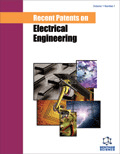Abstract
This paper describes the continuous progress of amorphous (a-Si:H) and microcrystalline (μc-Si:H) silicon based thin film solar cells and discusses its present scenarios based on patents and open reviews. The efficiency of hydrogenated amorphous silicon (a-Si:H) thin film solar cells has gradually improved from 2.4% to 15.2% (stable 13.0%). The major advantages of a-Si:H solar cells are the multijunction device capability, bandgap tailoring, easy fabrication, large scale production and high optical absorption coefficient. But the important factor for higher stabilized efficiencies is light induced effect on a-Si:H based solar cells was first reported by Staebler and Wronski. The highest recorded stabilized efficiency in micromorph cell is 10.18%. Though a lot of improvements have been done yet it needs more investigation. However, the improvement of open circuit voltage (Voc) is reviewed that is done with wide bangdgap window layers (a-SiC:H, μc-SiO:H, nc-Si:H etc) and inserting buffer layers at p/i and i/n interfaces in a-Si:H solar cells. An achievement of higher short circuit current (Jsc) by light trapping scheme is also reviewed. The material search for good optical and electrical properties and the device design technology is an immense need for further improvements of a- Si:H solar cell performances which are also being discussed with analysis of most relevant patents.
Keywords: Amorphous silicon, multijunction, stabilized efficiency, buffer layer, open circuit voltage, short circuit voltage, light induced effect, Microcrystalline Silicon Thin-Film Solar Cells, multijunction device capability, bandgap tailoring, optical absorption coefficient, micromorph cell, photovoltaic research, optoelectronic properties, conductive oxide, hydrogen, oxygen, carbon, germanium, hydrogen ratio, solar spectrum, very high frequency glow discharge (VHF-GD), trapping system, light induced degradation, intermediate reflector, short circuit current density, fill factor, transparent conductive oxide, Single junction, refractive index, superstrate configuration, alloys, electron-hole pairs, photovoltaic conversion efficiency, interface effects, Hot-Wire (HW) method, stacked-cell concept, quantum efficiency curves, Staebler-Wronski Effect, triple-junction structure, hybrid module, photostabilization, tunnel junctions, heterostructure, hot-wire chemical vapor deposition, fluorinated amorphous silicon, cascade solar cell structure, PECVD (Plasma Enhanced Chemical Vapor Deposition), micromorph tandem cells, fabrication method, nanotech antennas
 22
22






